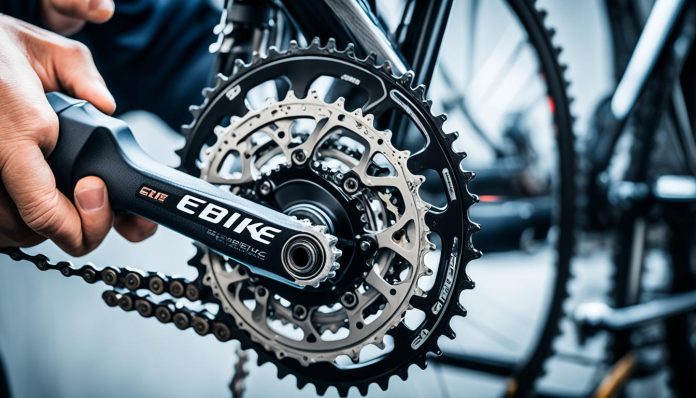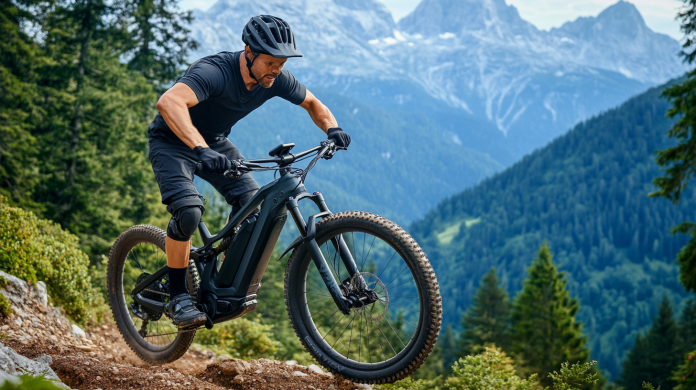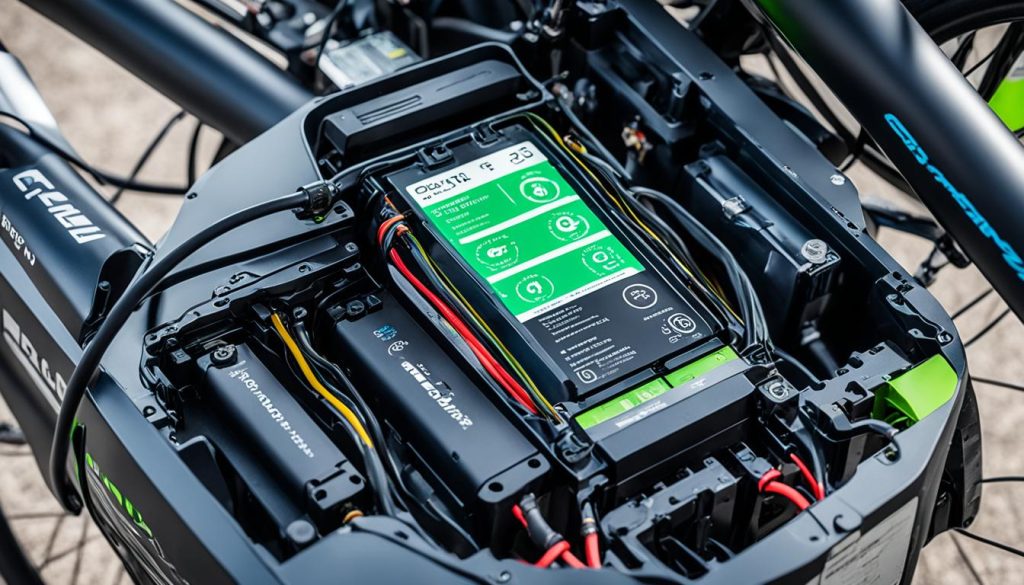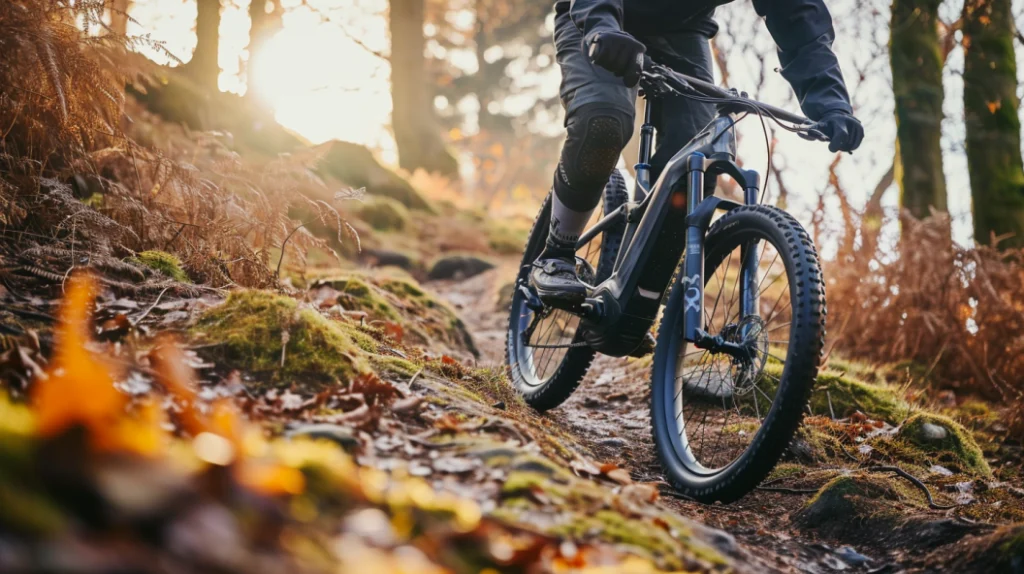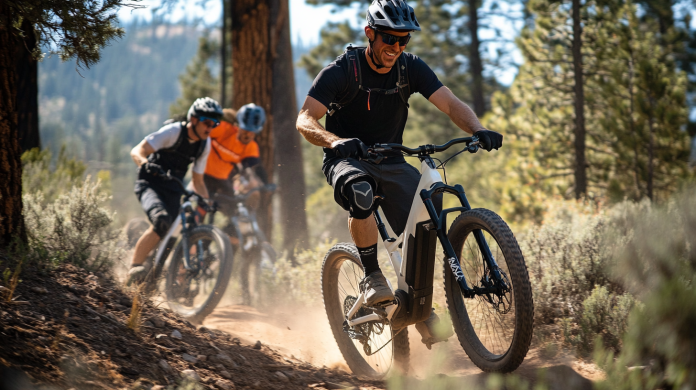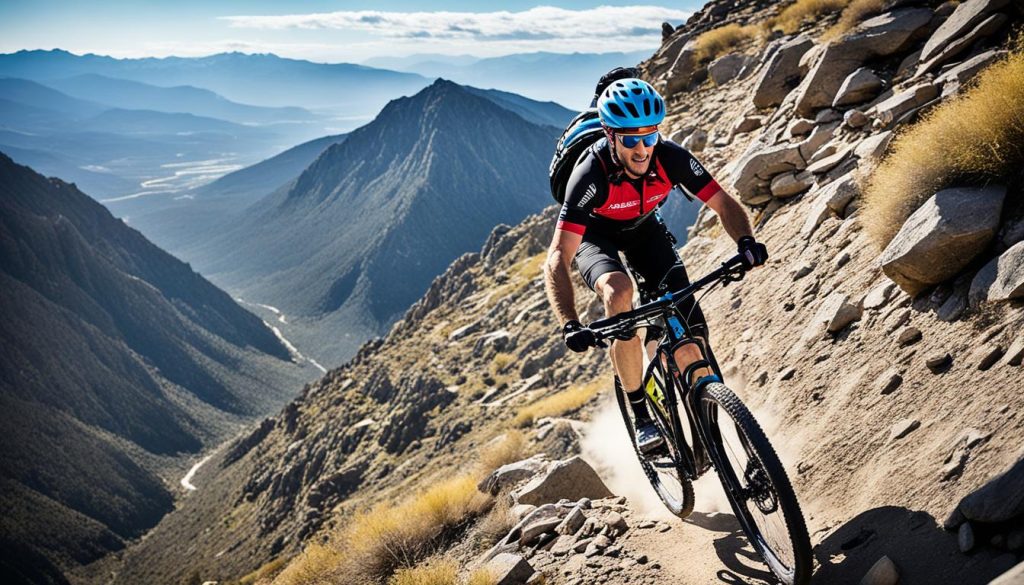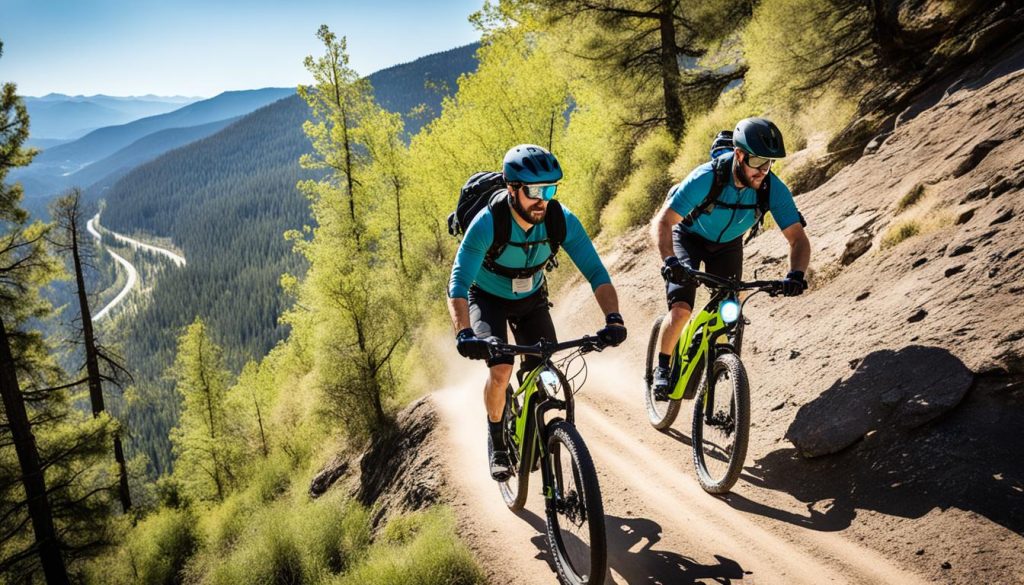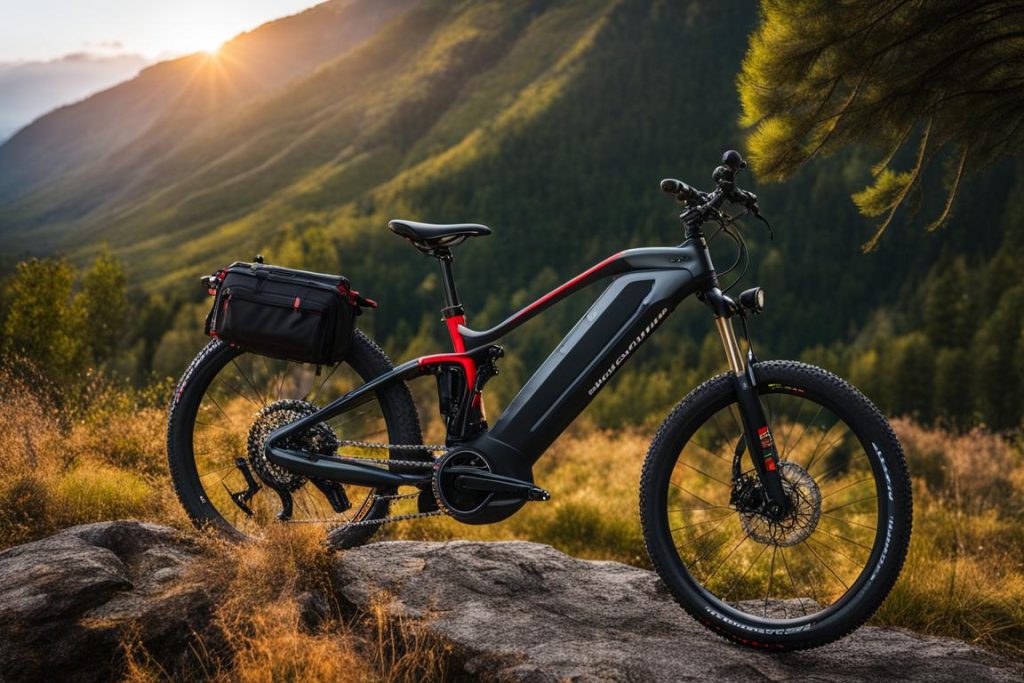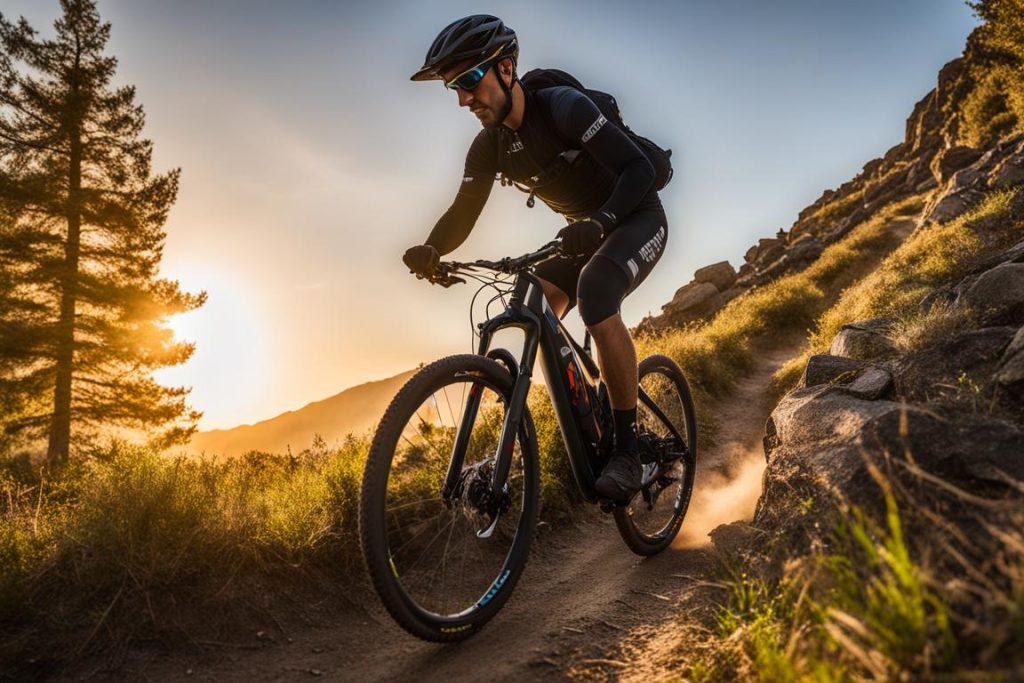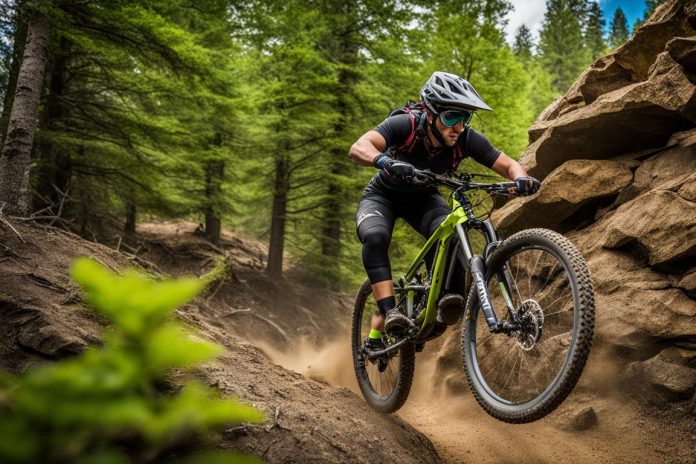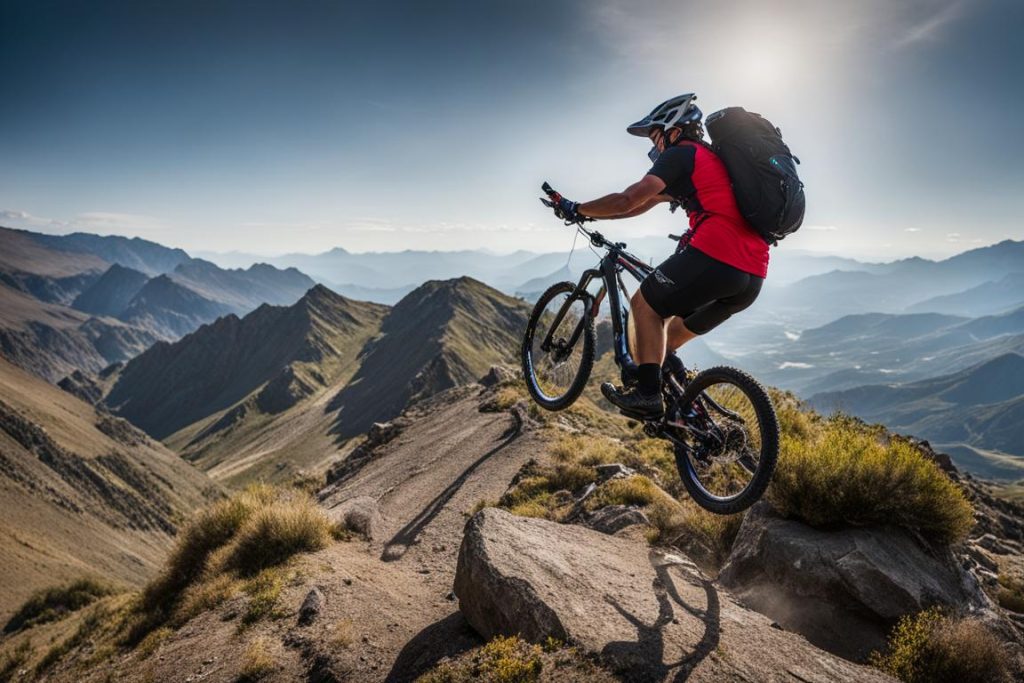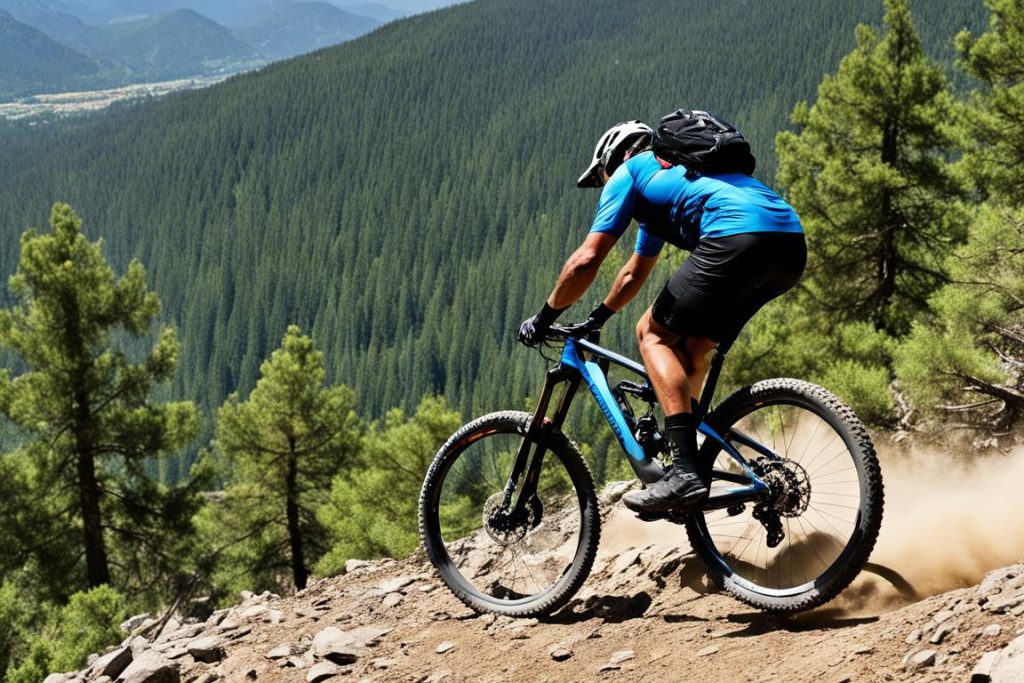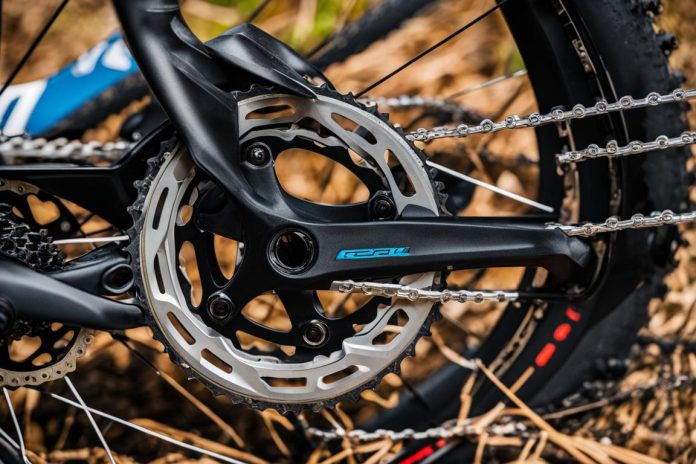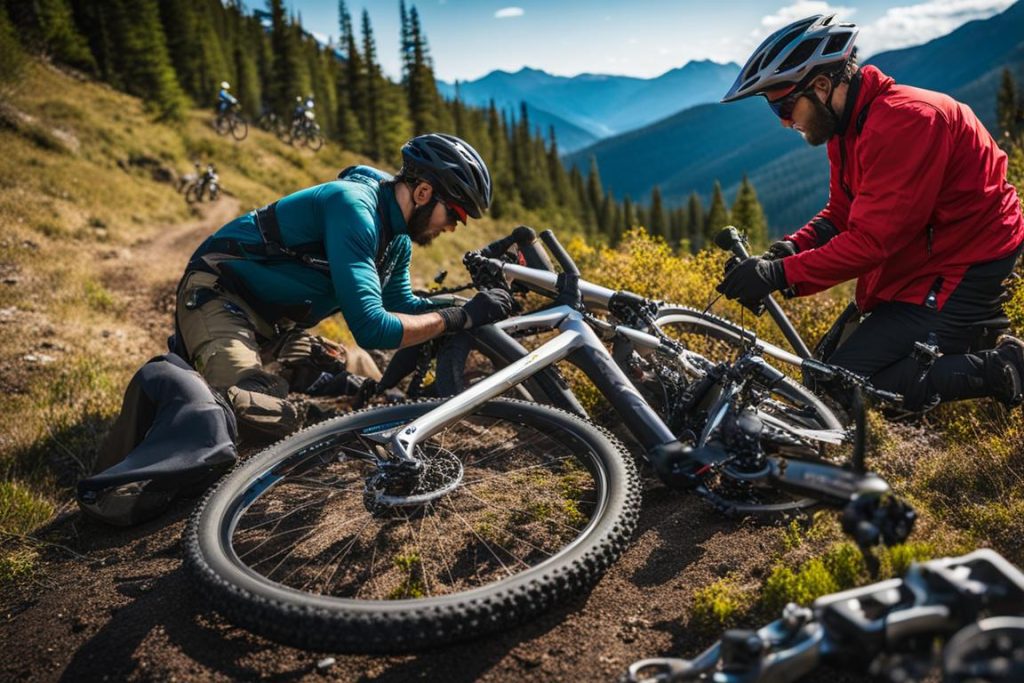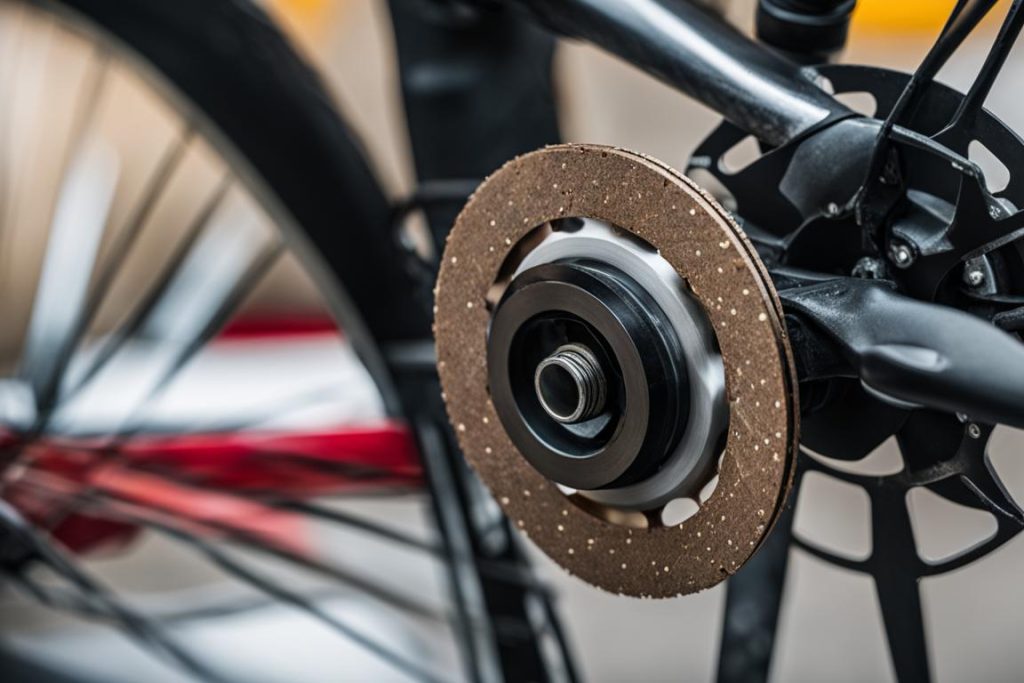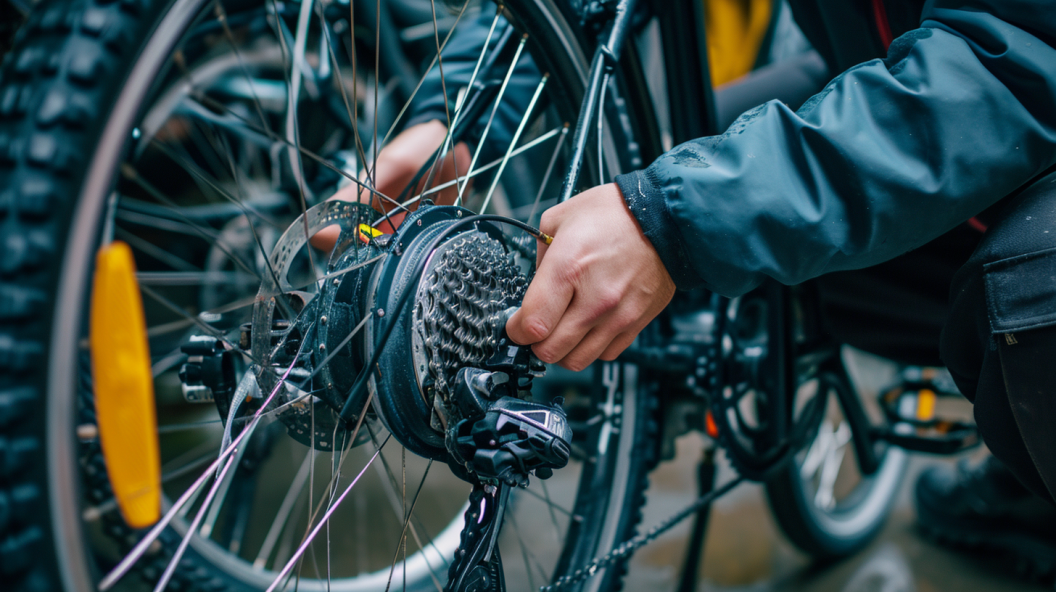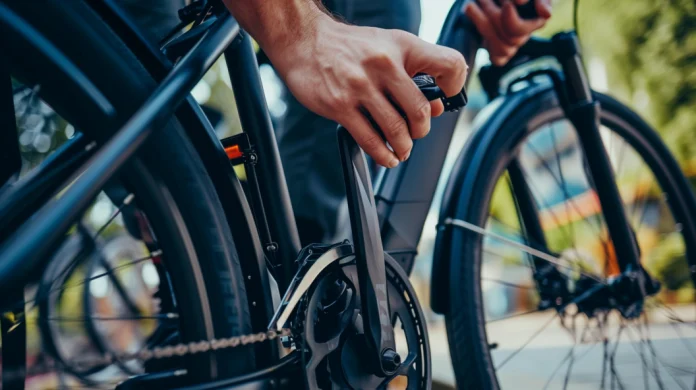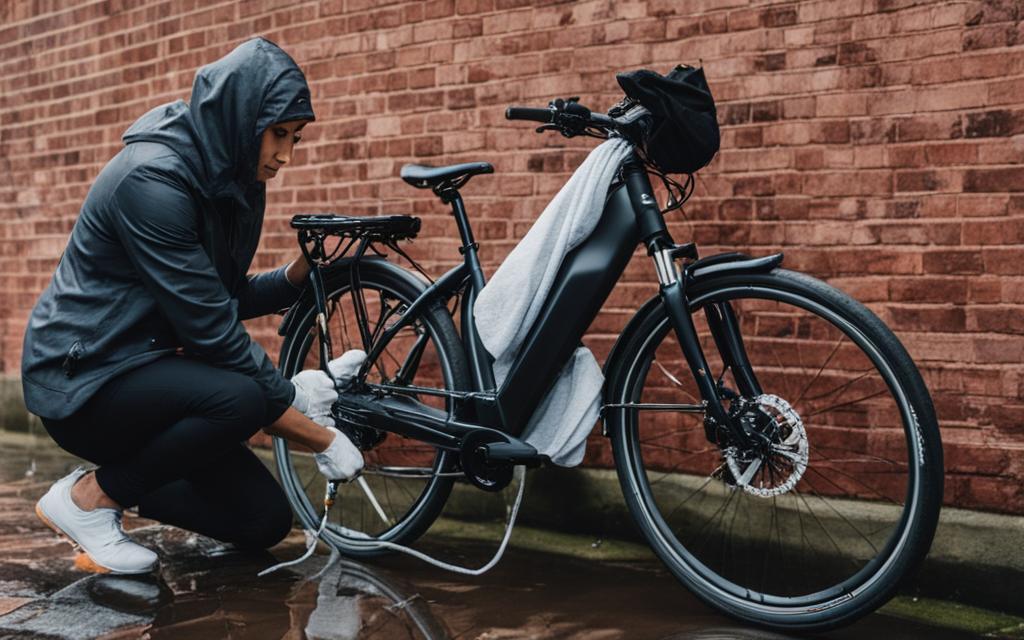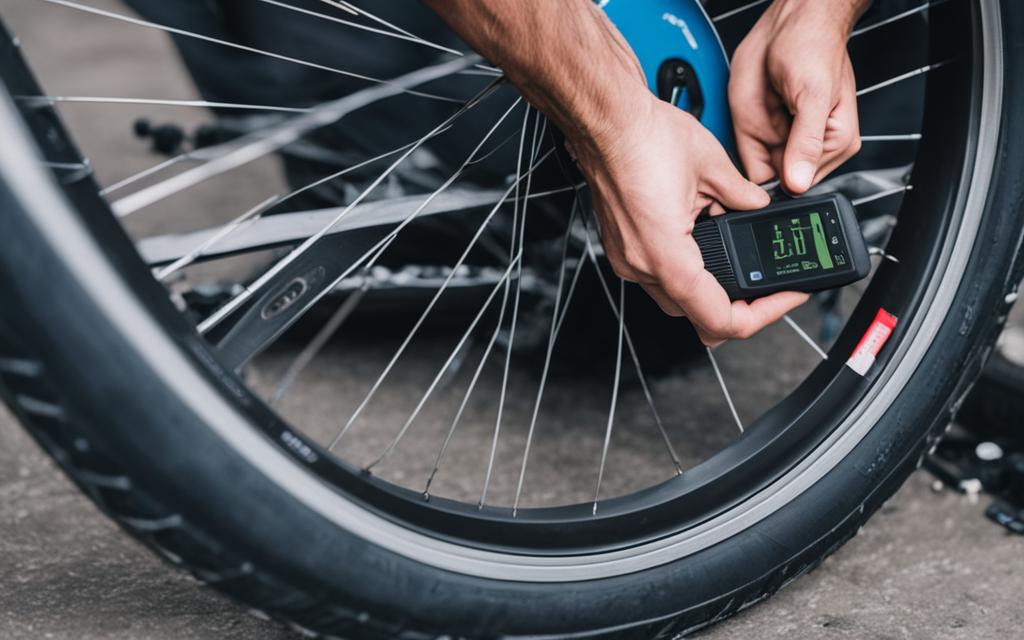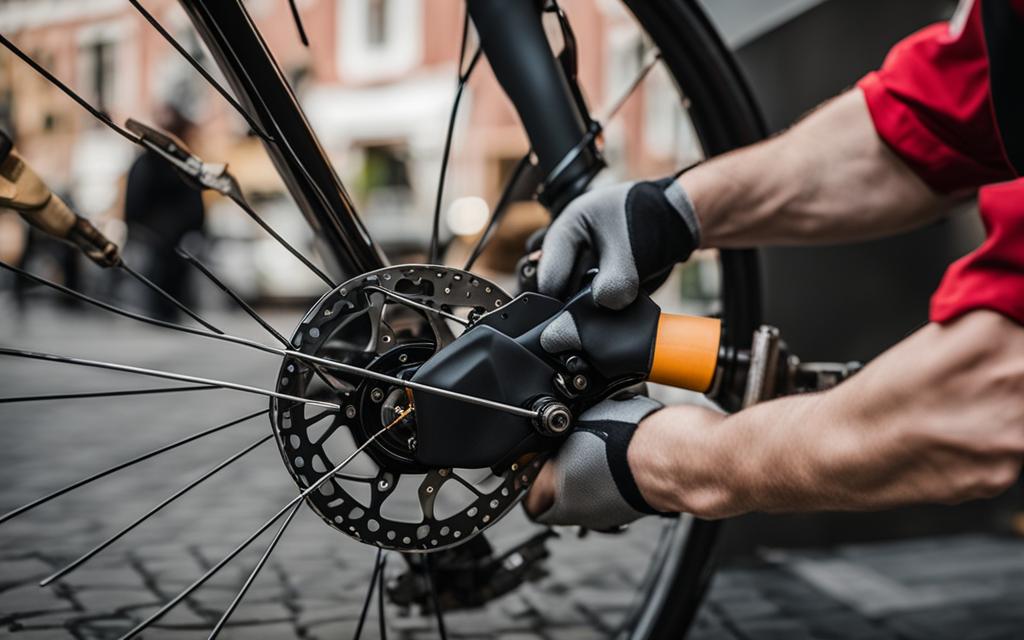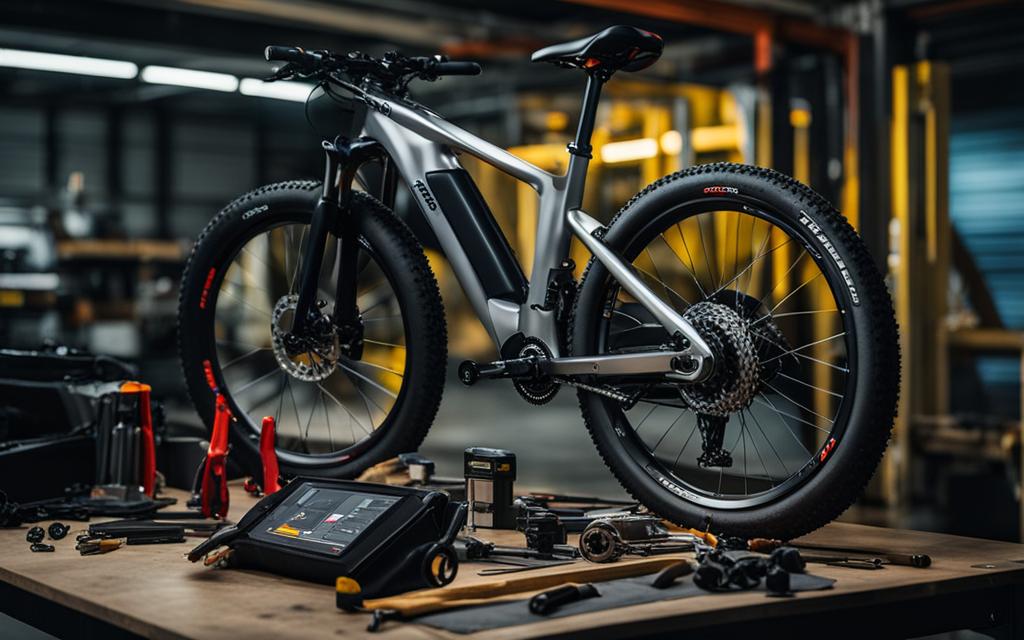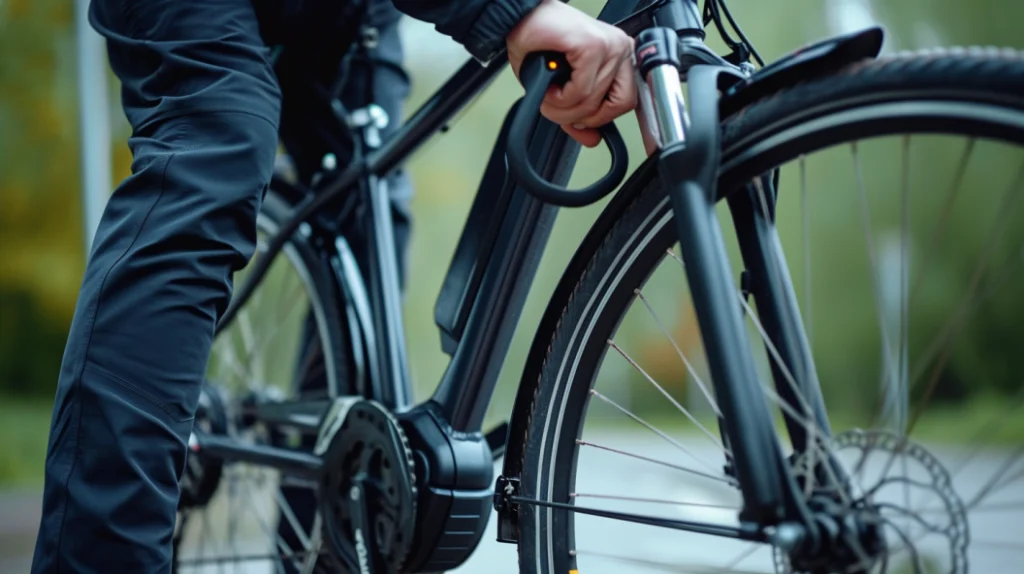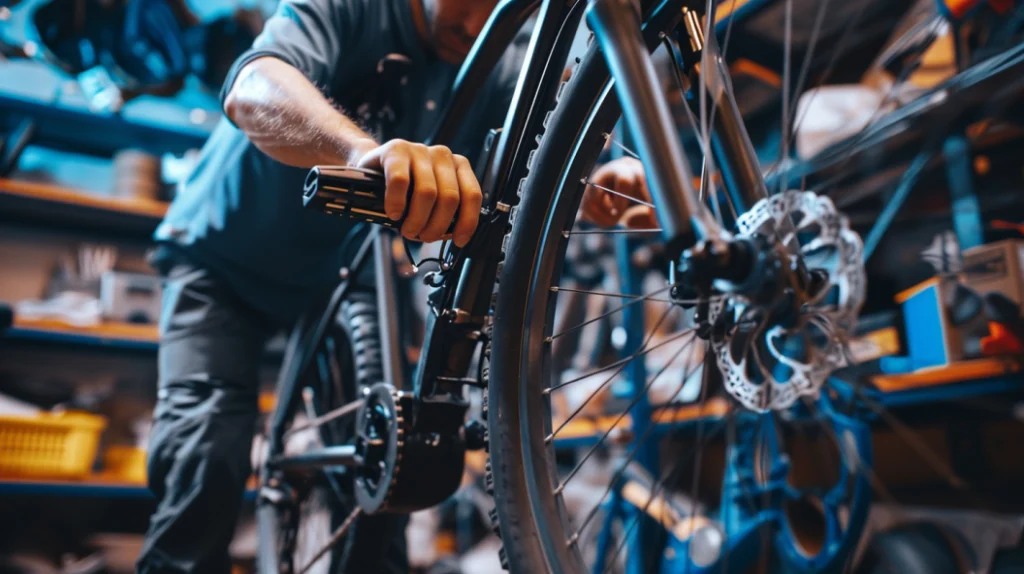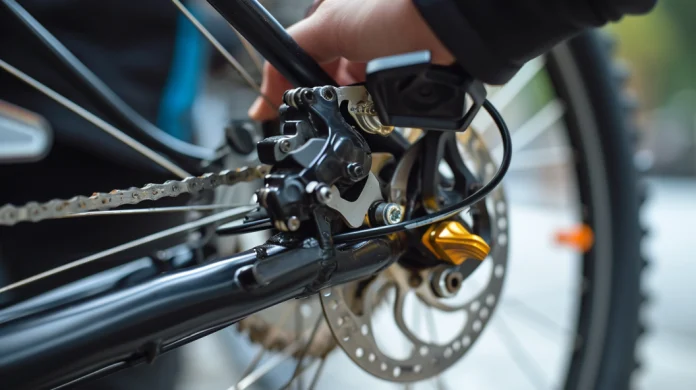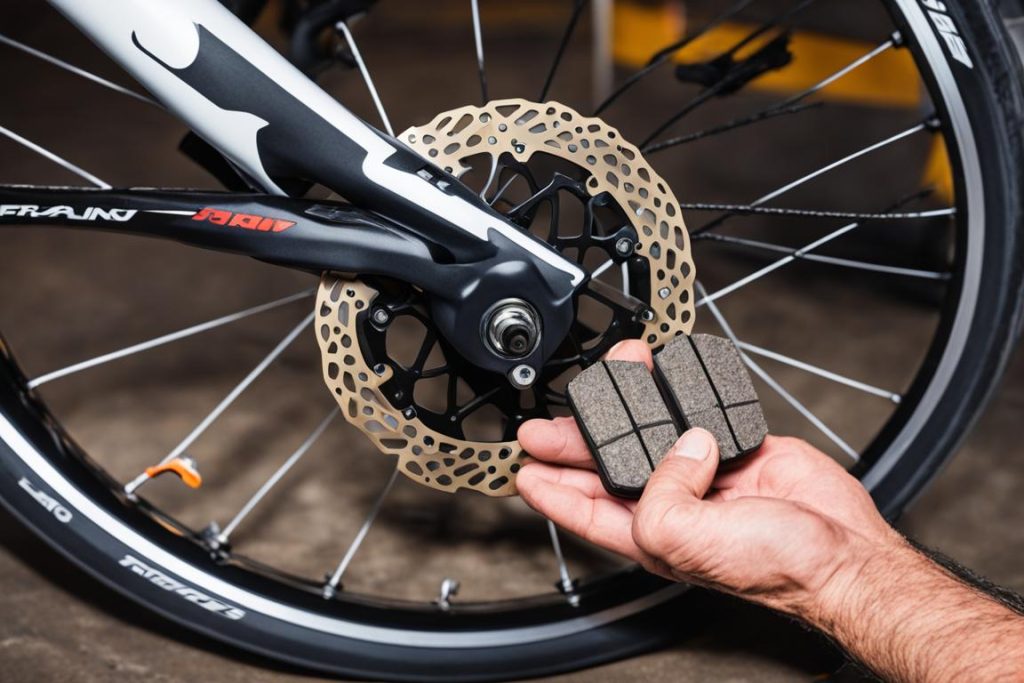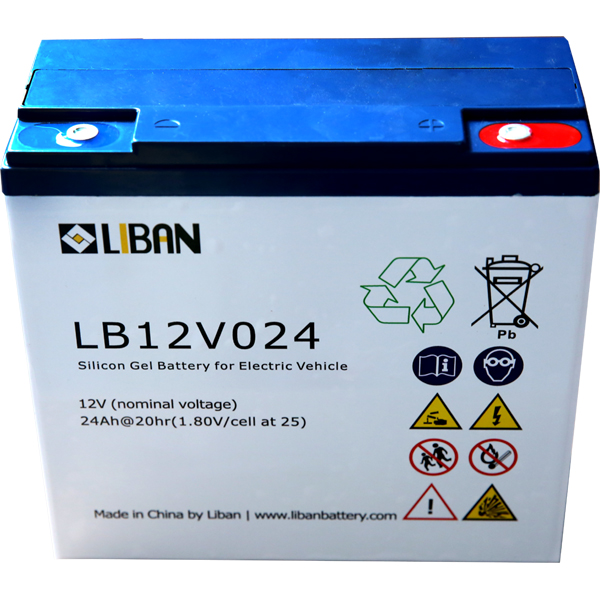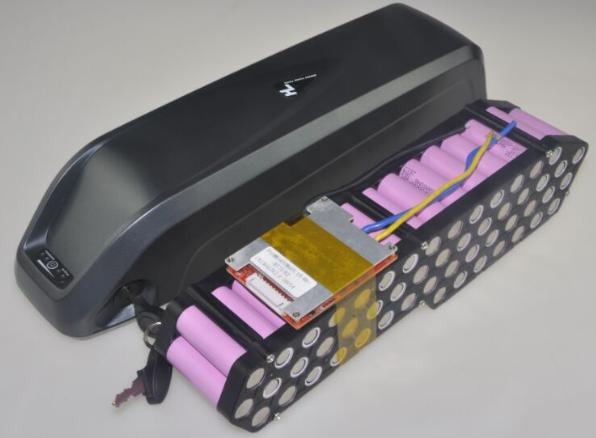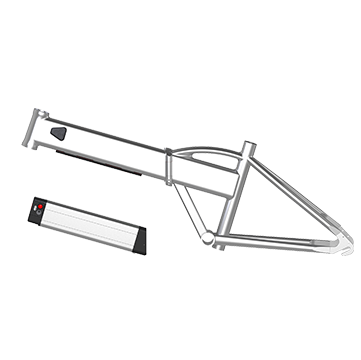Did you know regular lubrication can make your electric bike’s parts last up to 50% longer? Taking good care of your ebike is key to its smooth and efficient performance. Whether you’re commuting, riding for fun, or tackling off-road trails, your e-bike picks up dirt and wears down over time. If you don’t keep up with ebike lubrication, you might get more friction, and difficult shifting, also parts could fail early.
This guide will show you how to keep your electric bike’s chain, drivetrain, and other components well-lubricated and safe. You’ll learn about the best bike grease and lubricants and how to apply them right. This will help you get the most out of your ebike’s performance and longevity. Ride with confidence, knowing your ebike is in top shape.
Table of Contents
Key Takeaways
- Regular ebike lubrication keeps your bike running well and parts last longer.
- Good chain maintenance and lubrication means smoother shifting and less friction.
- Keeping the drivetrain and other parts well-lubricated prevents wear and damage.
- Looking after the battery and electrical system is vital for the best range and longevity.
- Sticking to a regular lubrication schedule keeps your ebike in great shape.
Introduction to eBike Lubrication
Electric bikes have changed how we move, blending cycling with electric power. They are eco-friendly and efficient. Knowing how to take care of them is key. It ensures you have a safe ride and keeps your e-bike running well.
Importance of Proper Lubrication
Looking after your e-bike is crucial, just like a car. It makes sure you have a smooth ride. Lubricating your electric bike monthly helps parts move smoothly, making your bike last longer.
Benefits of Regular Maintenance
Cleaning and lubricating your e-bike often helps it perform better and last longer. Owners who clean their bikes weekly have 30% fewer problems. Those who get professional tune-ups every six months see fewer breakdowns and better performance.
| Maintenance Task | Frequency | Benefits |
|---|---|---|
| Cleaning | Weekly | 30% fewer performance issues |
| Professional Tune-up | Every 6 months | 40% decrease in unexpected breakdowns, 20% increase in performance |
| Lubrication | Monthly | Reduced friction, extended component lifespan |
Putting time into your e-bike’s upkeep makes riding more fun. It also keeps your investment safe. By lubricating regularly and getting expert help when needed, you’ll get the most out of your e-bike.
Preparing for eBike Lubrication
Before you start on your electric bike, make sure you follow some key steps. First, turn off your e-bike and remove the battery. This keeps you safe from electrical dangers and protects the bike’s electronics from water damage during cleaning.
Then, take off any removable parts or displays on your bike. This makes it easier to reach the parts that need oil. Work in a place with good lighting but no direct sun. Sunlight can make soap and water dry too fast, leaving marks on your bike.
Gathering Essential Supplies
Get all the tools you need, like a soft-bristle brush, sponges, a bucket, mild soap or bike cleaner, a hose with a gentle spray, clean cloths, and the right lubricants for your e-bike’s drivetrain lubrication, chain lube, and bearing grease.
Safety Precautions
Before starting the electric bike maintenance, check the safety tips. Wear gloves to protect your hands and consider eye protection to keep out debris or chemicals. Work in a place with good airflow, and watch your step to avoid accidents during the e-bike care routine.
Getting your workspace ready and collecting the right tools helps ensure your e-bike stays in top shape. This means better longevity through proper bike cleaning and lubrication.
Lubricating the Chain
Keeping your electric bike’s chain clean and well-lubricated is key for its performance. Regular cleaning and lubrication help extend the life of your bike parts. They also improve gear lubrication and bearing lubrication. By using the right lubricant application techniques, your eBike’s chain will run smoothly and last longer.
Cleaning the Chain
Clean your eBike’s chain after every ride to get rid of dirt and grime. Deep clean it every 10 rides or so to remove tough contaminants. If you ride in wet or muddy areas, clean your chain more often. Tools and lubricants made for bikes, costing about $20-30, make cleaning easy and effective.
Applying Chain Lubricant
- Pick a top-quality, bike-specific lubricant that fits your eBike’s needs for drivetrain efficiency and extended component lifespan.
- Put lubricant on each chain link while pedaling backward to spread it evenly.
- Clean off any extra lubricant to stop dirt from sticking, which can mess up lubricant compatibility.
Regular cleaning and lubrication keep your eBike running well and reduce wear on parts. This simple routine helps you enjoy a smooth, efficient, and long-lasting ride.
Lubricating the Drivetrain
Looking after your electric bike’s drivetrain is key for top performance and long life. It includes the cassette and chainrings. They need regular care and oil to work well and be good for the planet.
First, check the drivetrain for wear signs like worn teeth or bent parts. You can clean and oil it yourself, but replace parts yourself only if you’re sure. Over time, your e-bike might need gear adjustments for smooth shifting. Your user manual can guide you on these adjustments.
For lubrication, pick eco-friendly and sustainable chain oils. These electric bicycle maintenance products help your bike run smoothly and protect the environment. Using a good bike chain lube can make your drivetrain last longer and support e-bike maintenance and electric bicycle care.
“Proper lubrication is the key to maintaining a healthy and efficient drivetrain on your electric bike. Neglecting this crucial task can lead to premature wear and costly repairs down the line.”
How often you need to lubricate depends on your riding and the maker’s advice. Generally, oil your chain when you hear a squeak, showing it’s time for chain lubricants. Also, clean the chain after each ride to stop dirt and grime from building up.
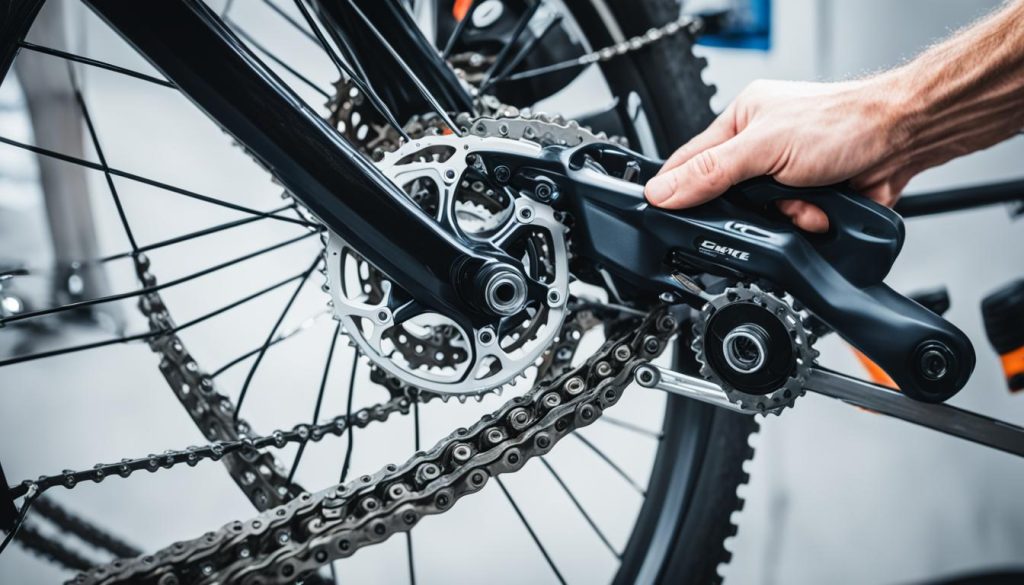
By taking care of and oiling your electric bike’s drivetrain, you’ll enjoy a smooth, efficient ride for many years. Using eco-friendly lubricants and sticking to a maintenance plan will keep your e-bike in top shape. This supports sustainability and ensures your bike runs well.
eBike Lubrication
Keeping your eBike’s gears, derailleurs, and brakes well-lubricated is key for smooth rides and efficient pedaling. Using the right lubricants helps reduce wear and tear. It also boosts performance and extends the life of these important parts.
Lubricating the Gears and Derailleurs
For smooth gears and derailleurs, use a lubricant made for bikes with high torque. Put a few drops on the derailleur pulleys and gear teeth. Make sure not to touch the brake pads with it. This cuts down on friction, makes shifting crisp, and protects against early wear.
Lubricating Brake Components
It’s vital to keep your eBike’s brakes well-lubricated for safe stops. Check the brake pads for wear and clean the system with a damp cloth. Then, apply a thin layer of brake lubricant to moving parts like the caliper pivots and lever mechanisms. This keeps your brakes working well and prevents squeaks or sticking.
| Lubricant Type | Recommended Use | Typical Price Range |
|---|---|---|
| Standard Bike Chain Lube (Squirt Dry Lube, Muc-Off Dry Lube) | Suitable for dry conditions, long-lasting, environmentally friendly | $8.00 – $15.00 |
| eBike Chain Lube (Squirt E-Bike Chain Lube, Muc-Off eBike Dry Lube) | Designed for high torque and power, long-lasting protection, superior lubrication | $7.49 – $16.95 |
By lubricating your eBike’s parts right, you get smooth, efficient rides. You also reduce wear and make these parts last longer.
Lubricating Other Components
While the drivetrain and brakes are key for your eBike, other parts need regular care too. Lubricating your eBike’s suspension, bearings, pedals, and cranks makes pedaling smooth, boosts efficient power transfer, and extends their life.
Lubricating Suspension and Bearings
For a smooth suspension, use fork oil or a lubricant made for suspension. Follow the maker’s guide for applying it right. For the headset, bottom bracket, and wheel bearings, choose a top-notch bearing grease for less friction and eco-friendly options.
Lubricating Pedals and Cranks
Use a bike-specific lubricant or lithium-based grease on pedals and cranks. This keeps pedaling smooth and ensures efficient power transfer. Make sure to spread the lubricant evenly and clean off any extra to stop dirt from sticking.
“Regular lubrication of your eBike’s components is essential for maintaining optimal performance and longevity improvement.”
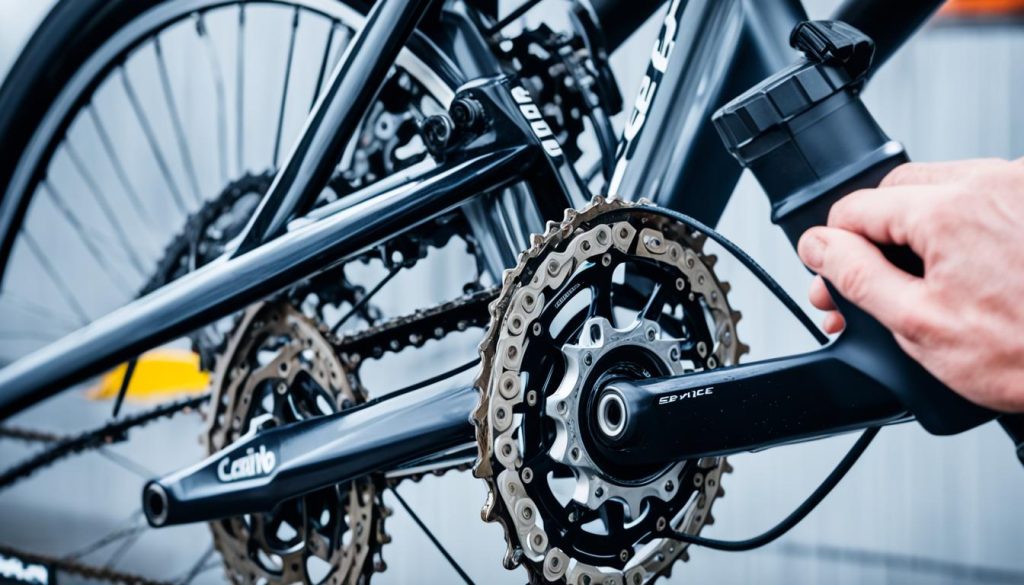
Following the maker’s advice and picking the right eco-friendly options and application techniques is key. Keeping up with your eBike’s lubrication means a smooth pedaling experience and efficient power transfer for a long time.
Battery and Electrical System Care
The motor and battery are key parts of your electric bike. Keeping them in good shape is vital for a smooth ride. Here are some tips to help you care for your e-bike’s battery and electrical systems.
Battery Maintenance Tips
It’s important to charge your battery regularly and keep it between 20% and 80% full. Don’t let it run out completely to save its life. When you’re not using your e-bike, charge it to about 50% and store it in a cool, dry spot.
Cleaning Electrical Components
Keep the motor clean and clear of dirt. Check your manual for how to clean it right. If you see error codes on the display, look up what they mean in the manual.
Wipe down the display and electrical parts often to stop corrosion. This keeps your e-bike running well. By taking care of your battery and electrical systems, your e-bike will keep performing well on every ride. Remember, regular maintenance is key to a great riding experience.
Post-Lubrication Tasks
After cleaning and lubricating your electric bike, drying it properly is key to avoid rust and water damage. Use clean, dry cloths to wipe away any extra moisture. Focus on the motor, battery compartment, and other delicate spots. Once dry, put back the battery and any removed electronics.
Now, it’s time to check and test your electric bike. Take it for a spin to make sure everything works right, like the brakes, gears, and electric assist. If something’s off, make small fixes to keep it safe and running well.
Don’t forget about protecting your bike’s frame after lubrication. Clean the frame and parts with a cloth to remove any leftover lubricant. This keeps your ebike looking great and stops dirt from sticking to the lubricated parts.
- Thoroughly dry the bike using clean, dry cloths to prevent rust and water damage.
- Reattach the battery and any removed electronics.
- Perform a test ride to ensure all components are functioning correctly.
- Make any necessary minor adjustments to maintain optimal performance and safety.
- Wipe down the frame and components to remove excess lubricant and protect the finish.
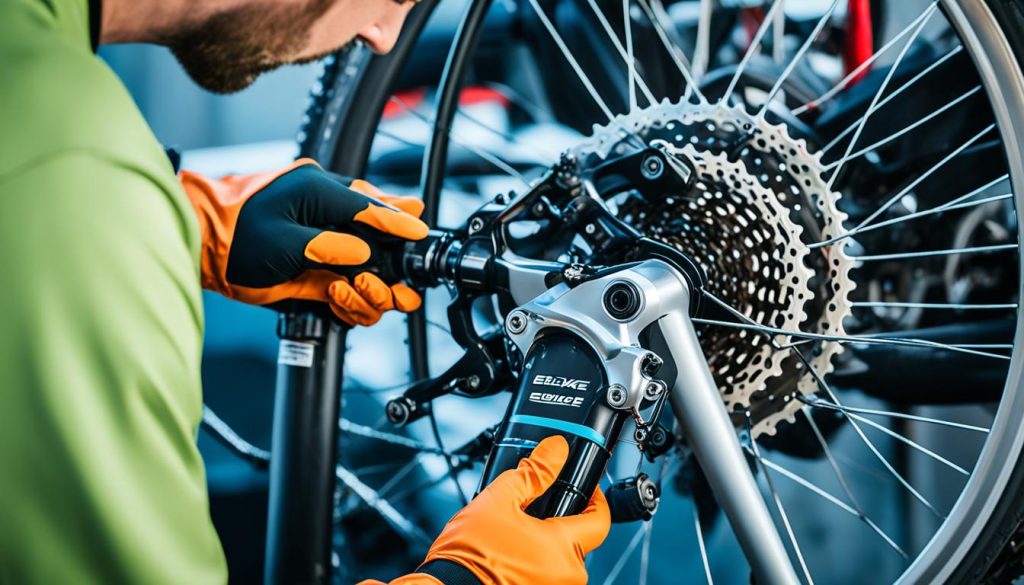
By doing these post-lubrication tasks, your electric bike will be in top shape for your next adventure. You’ll also help extend the life of your bike with the right maintenance and care.
Lubrication Schedule and Frequency
Keeping your electric bike in top shape is key. A regular lubrication routine is essential. Make it a habit to check your bike weekly, lubricate the chain, and clean it monthly. This will greatly improve your e-bike’s lifespan.
It’s also vital to check tire pressure often. This ensures safety, and better performance, and helps save battery life. A maintenance plan suited to your riding and bike model will keep your e-bike running smoothly.
Lubrication Recommendations
- Lubricate your e-bike chain every 100-150 kilometers (60-90 miles) in dry weather. Do it more often if you ride in wet or muddy conditions.
- Wax-based lubes are great for most riding conditions. They’re waterproof and keep dust away.
- Wet lubes are best for riding in the rain or mud. They provide top-notch performance and are thick enough to handle moisture.
- Check your e-bike chain often for wear and tear. This prevents damage to other parts.
Maintenance Schedule
- Do daily checks to spot any problems early.
- Keep your e-bike chain clean and lubricated every week.
- Do a deep clean and check-up on your e-bike each month.
Stick to a maintenance plan that fits your riding style and bike type. This will make your e-bike last longer and run better. For more tips on eBike lubrication and maintaining your urban eBike, check out online resources.
“Regular e-bike chain maintenance should typically be done after ten or so rides. Off-road riders or those frequently exposed to rain and mud might need to clean and lubricate their chain more often than regular riders.”
Conclusion
Looking after your e-bike is key to a safe and fun ride. Regular cleaning, lubrication, and maintenance are musts. These simple steps help your electric bicycle last longer and keep you happy.
For tips on e-bike care and how to keep your bike running well, follow our ebikeus.com site. It’s full of info and has a community of e-bike lovers. No matter if you’re new to e-bikes or have been riding for years, the ebikeUS community offers great e-bike maintenance resources and electric bike care tips.
FAQ
Why is proper lubrication important for my electric bike?
Proper lubrication is key for your electric bike’s life and performance. It cuts down on friction, stops wear and tear, and keeps the drivetrain, suspension, and moving parts smooth.
How often should I lubricate my electric bike?
How often you need to lubricate depends on how you ride and use your bike. Generally, lubricate the chain and parts weekly or every 100-200 miles. Do a detailed check and lubrication every month.
What type of lubricants should I use for my electric bike?
Use high-quality, bike-specific lubricants for the chain, drivetrain, suspension, and other parts. Don’t use household oils or greases as they might not be safe for your bike and could damage it.
How do I properly clean and lubricate the chain on my electric bike?
Clean the chain with a degreaser made for bikes and a clean rag. Dry the chain well, then put on a thin layer of bike-specific chain lubricant while pedaling backwards. Remove any extra lubricant.
How do I lubricate the other components on my electric bike?
Besides the chain, lubricate the gears, derailleurs, suspension, bearings, pedals, and cranks with the right bike-specific lubricants. Just put a little lubricant on each part and clean off any extra.
How do I maintain the battery and electrical system on my electric bike?
Keep your battery charged between 20% and 80% regularly. Store the battery in a place away from extreme temperatures. Clean the motor and electrical parts often, and follow your user manual for any upkeep or fix tips.
How can I ensure my electric bike is properly dried and protected after lubrication?
Dry your electric bike well after cleaning and lubricating with clean, dry cloths. Focus on the motor, battery area, and other delicate spots. Once dry, put the battery back on and any other removed parts. Test ride to make sure everything works right.


